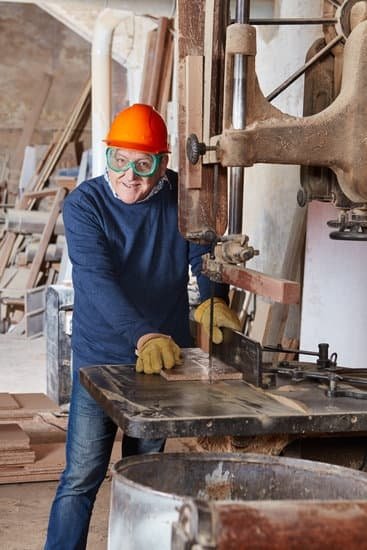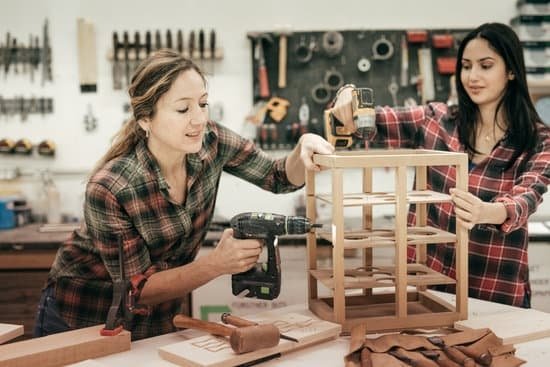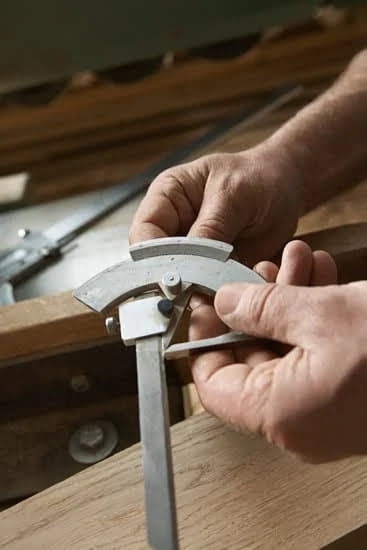What are the woodworker’s primary measuring tools? Accurate measurements are crucial in woodworking, where precision is key to a successful and high-quality project. From measuring boards for cutting to ensuring precise angles and dimensions, woodworkers rely on a variety of primary measuring tools to achieve accuracy in their work. In this article, we will explore the essential measuring tools that every woodworker should have in their arsenal.
Woodworking requires careful attention to detail, and having the right measuring tools can make all the difference in achieving precise results. Whether it’s taking accurate dimensions for a custom piece of furniture or ensuring seamless joinery, woodworkers need reliable instruments to measure and mark their materials effectively.
Throughout this article, we will delve into the most versatile and essential measuring tools used by woodworkers, including tape measures, combination squares, rulers and straight edges, calipers, measuring gauges, and even modern advancements such as laser measuring tools. Understanding how each tool functions and its specific applications will help woodworkers choose the right instruments for their projects. By mastering these primary measuring tools, woodworkers can ensure the precision and accuracy necessary for creating exceptional woodworking pieces.
Tape Measure
The tape measure is arguably the most essential tool in a woodworker’s arsenal, providing versatility and accuracy for a wide range of measurements. This simple yet indispensable tool allows woodworkers to quickly and easily measure everything from board lengths to inside dimensions, making it an invaluable asset in any woodworking project.
One of the key features of a tape measure is its flexibility, allowing it to measure curved or straight surfaces with ease. Most tape measures also include a locking mechanism that holds the blade in place, ensuring accurate measurements without the need for additional hands. Furthermore, many modern tape measures come with standout features that enable longer measurements to be taken without the assistance of another person.
Measuring accurately is crucial in woodworking, as even the slightest miscalculation can lead to costly mistakes and wasted materials. The tape measure provides woodworkers with a reliable and straightforward way to ensure precise measurements, whether they are working on large carpentry projects or smaller-scale woodworking tasks.
| Tape Measure Features | Benefits |
|---|---|
| Flexibility | Ability to measure curved or straight surfaces |
| Locking Mechanism | Secures blade for accurate measurements |
| Standout Feature | Enables longer measurements without assistance |
Combination Square
When it comes to woodworking, accuracy and precision are crucial. This is where a woodworker’s primary measuring tools come into play. One of the most essential and versatile measuring tools in a woodworker’s arsenal is the combination square.
The combination square consists of a ruler and interchangeable heads, which allows for a wide range of measuring and marking tasks. It is commonly used for checking 90-degree angles, laying out joinery, and ensuring accurate cuts and dimensions. The versatility of the combination square makes it an indispensable tool in any woodworking workshop.
Here are some key features and uses of the combination square:
- Checking 90-degree angles
- Laying out joinery such as mortise and tenon joints
- Marking parallel lines
- Measuring depths
- Setting precise measurements for cuts
In addition to its versatility, the combination square provides woodworkers with the precision required for intricate woodworking projects. Its ability to make accurate measurements and markings makes it an essential tool for achieving high-quality craftsmanship in woodworking.
Ruler and Straight Edge
Rulers and straight edges are essential tools in any woodworker’s workshop. They come in various types and serve different purposes, all with the common goal of providing accurate measurements for woodworking projects. One of the primary uses of rulers and straight edges is to ensure straight and precise cuts, which are crucial in creating high-quality woodwork.
The most common type of ruler used in woodworking is the standard measuring tape. This flexible and retractable tool allows woodworkers to measure both length and width accurately. Tape measures come in various lengths, with the most popular sizes being 16 feet, 25 feet, and 35 feet. In addition to standard tape measures, there are also specialized versions such as self-centering tape measures that make it easier to find the exact center of a board or piece of wood.
Another essential measuring tool is the combination square, which is both a ruler and a level combined into one tool. It provides accurate measurements for both length and angles, making it incredibly versatile for woodworking projects. Additionally, combination squares often include a built-in level, allowing woodworkers to ensure that their work is perfectly aligned.
| Measuring Tool | Primary Use |
|---|---|
| Tape Measure | Measuring length and width accurately |
| Combination Square | Provides accurate measurements for both length and angles |
Calipers
Vernier Calipers
One of the most common types of calipers used in woodworking is the vernier caliper. This tool features a main scale and a sliding Vernier scale, allowing woodworkers to take incredibly precise measurements with minimal margin for error. Vernier calipers can measure both external and internal dimensions, making them versatile tools for woodworking projects.
Dial Calipers
Dial calipers are another popular choice among woodworkers for their ease of use and accuracy. These calipers utilize a simple dial mechanism to display measurements, providing clear readings without the need for interpretation. Dial calipers are ideal for tasks that require quick and frequent measurements, making them a valuable tool in any woodworker’s collection.
Digital Calipers
In recent years, digital calipers have become increasingly popular due to their ease of use and precise measurement capabilities. Equipped with an electronic display, digital calipers provide instant and accurate readings, eliminating the potential for human error in interpretation. Woodworkers benefit from the convenience and reliability of digital calipers when precision is paramount in their projects.
Ultimately, the use of calipers in woodworking ensures that measurements are precise and accurate, resulting in high-quality finished products. Whether it’s vernier, dial, or digital calipers, these precision measuring tools are indispensable in any woodworker’s workshop.
Measuring Gauges
In the world of woodworking, precision is key. Achieving accurate measurements is essential for creating high-quality woodwork, and measuring gauges play a crucial role in this process. These specialized tools are designed to provide woodworkers with precise measurements for a variety of tasks. Let’s take a closer look at the different types of measuring gauges and their specific uses in woodworking.
Types of Measuring Gauges:
- Marking Gauge: This type of gauge is used to accurately scribe lines parallel to an edge, making it ideal for tasks such as marking out mortise and tenon joints. The adjustable fence allows woodworkers to set the distance from the edge with precision.
- Mortise Gauge: Specifically designed for marking out the width and location of mortises, this gauge features two pins that can be adjusted to the desired spacing. This ensures that mortises are cut accurately and consistently.
- Center Gauge: Used for finding the center of round stock, this type of gauge helps woodworkers accurately mark drilling points or layout symmetrical designs on cylindrical pieces.
Specific Uses in Woodworking:
Measuring gauges are indispensable tools for ensuring accuracy and consistency in woodworking projects. From marking out joints to locating drilling points, these specialized tools allow woodworkers to achieve precise results every time. With their ability to make exact measurements and markings, measuring gauges are essential for maintaining high standards in woodworking craftsmanship.
Laser Measuring Tools
In the modern age, woodworking has been revolutionized by technological advancements, and laser measuring tools are at the forefront of this transformation. These tools have become an essential part of a woodworker’s toolkit, offering unparalleled precision and efficiency in taking measurements. Laser measuring tools utilize laser beams to quickly and accurately measure distances, making them an invaluable addition to any woodworking project.
Advantages of Laser Measuring Tools
One of the primary advantages of laser measuring tools is their speed and accuracy. Unlike traditional measuring devices such as tape measures or rulers, laser measuring tools provide instantaneous and precise measurements with just the push of a button. This not only saves time but also minimizes the margin for error in woodworking projects. Additionally, laser measuring tools are capable of measuring long distances with ease, eliminating the need for multiple measurements and reducing the chances of miscalculations.
Applications in Woodworking
Laser measuring tools have a wide range of applications in woodworking, from simple tasks such as taking basic measurements to more complex projects like installing cabinets or laying out intricate designs. These tools can be used to measure both horizontal and vertical distances accurately, making them perfect for ensuring that pieces fit together seamlessly. Furthermore, laser measuring tools are particularly useful for tasks that require precise alignment and leveling, such as hanging shelves or installing hardware.
Choosing the Right Laser Measuring Tool
When selecting a laser measuring tool for woodworking purposes, it is essential to consider factors such as measurement range, accuracy, durability, and additional features like built-in levels or digital displays. It is also crucial to ensure that the tool’s measurements are consistent across various surfaces and lighting conditions. By choosing a high-quality laser measuring tool that meets these criteria, woodworkers can significantly enhance the accuracy and efficiency of their projects while minimizing potential errors.
Conclusion
In conclusion, the importance of having the right measuring tools for precision and accuracy in woodworking cannot be overstated. From the versatile tape measure to the precise calipers, each tool plays a crucial role in ensuring that woodworkers are able to create accurate and high-quality pieces. Without these measuring tools, it would be nearly impossible to achieve the level of precision necessary for crafting furniture, cabinets, or other wooden creations.
Woodworking is a craft that demands attention to detail, and having the right measuring tools is essential for ensuring that every cut, joint, and angle is made with precision. The tape measure, combination square, rulers and straight edges, calipers, as well as measuring gauges all serve specific purposes in the woodworking process, allowing woodworkers to take accurate measurements and make precise cuts.
Additionally, modern advancements such as laser measuring tools further enhance a woodworker’s ability to achieve accuracy in their projects.
Frequently Asked Questions
What Is Woodwork Measuring Tools?
Woodwork measuring tools are instruments or devices used to accurately measure the dimensions of wood pieces during woodworking projects. These tools include items such as tape measures, rulers, calipers, squares, and protractors, among others.
What Is the Tool to Measure of Wood?
The tool commonly used to measure wood is the tape measure. It is a flexible ruler that can extend several feet and is perfect for taking both long and short measurements of wood pieces with precision. Tape measures come in various lengths and can have different features such as locking mechanisms and magnets.
What Is a Woodworking or Metalworking Tool Used for Marking and Measuring Wood?
In woodworking or metalworking, a tool used for marking and measuring wood is called a combination square. This versatile tool consists of a ruler and interchangeable heads that allow for accurate marking, measuring, and checking for squareness in woodworking projects. Combination squares are essential for ensuring precision in the cutting and shaping of wood pieces.

Hi everyone! I’m a woodworker and blogger, and this is my woodworking blog. In my blog, I share tips and tricks for woodworkers of all skill levels, as well as project ideas that you can try yourself.





